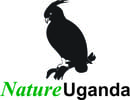Three new chameleon species discovered in Uganda

A team of researchers recently discovered new species of chameleons as they carried out research in different forests and mountains of Uganda. The three new species described for Uganda are- Rhampholeon nalubaale from Kibale National Park, Rhampholeon plumptrei from Bwindi Impenetrable National Park, and Rhampholeon monteslunae from Rwenzori Mountains National Park. The species were teased out of the Pygmy chameleon group – Rhampholeon boulengeri, that was shown to contain six genetically distinct species using DNA analysis (Read Hughes & Behangana et al, 2024).
The three new chameleon species, added to the Ugandan checklist of reptiles, raises the number of chameleons from 13 to 16 species. Chameleons in ecosystems are known to eats lots of bugs thus controlling pests and parasites. Their unique ability to change colors has made them highly sought after as pets. Recently, they have become the second most traded pet animals, following birds. Additionally, chameleons offer significant potential for ecotourism.
These pygmy chameleons usually live on the forest floor and “exhibit traits closely mimicking a dead leaf.”

©Daniel F. Hughes. Rhampholeon nalubaale, or goddess pygmy chameleon
Rhampholeon nalubaale, or goddess pygmy chameleon
Goddess pygmy chameleons have been found in lowland forests of the Democratic Republic of the Congo and Uganda, two neighbouring countries in central Africa.
The researchers said they named the new species “Nalubaale,” a Luganda word meaning “a spirit of feminine qualities.”

©Daniel F. Hughes. Rhampholeon plumptrei, or Plumptre’s pygmy chameleon
Rhampholeon plumptrei, or Plumptre’s Pygmy Chameleon
This species has a very large geographic distribution from eastern DRC (Kahuzi-Biega National Park) to western Kenya (Kakamega Forest National Reserve), including its occurrence in several protected areas (e.g., Bwindi Impenetrable National Park and Mabira Forest, Uganda).
Researchers said they named the new species after Andrew Plumptre “for his efforts in promoting the conservation of Albertine Rift biodiversity and whose leadership with the Wildlife Conservation Society has inspired scientists.”
Rhampholeon monteslunae, or Mountains of the Moon Pygmy Chameleon

©Daniel F. Hughes. Rhampholeon monteslunae, or Mountains of the moon pygmy chameleon
The species is found in montane forests at an elevation range of 1655–2360m including Rwenzori Mountains National Park, Bururi Forest Nature Reserve of Burundi.
The name R. monteslunae is derived from the Latin words for mountain, mons, and moon, luna, in reference to the original phrase for the Rwenzori Mountains, montes lunae, or “Mountains of the Moon”.
The research team in Uganda comprised of Dr. Mathias Behangana, Dr. Daniel Hughes, and Mr Wilber Lukwago. Dr. Mathias Behangana and Dr. Daniel Hughes have been working on Herpetofauna Conservation Assessment of Uganda since 2015.
The Chameleons of Uganda – New List
Savannah Chameleons (Chamaeleo)
- Slender Chameleon (Chamaeleo gracilis)
- Smooth Chameleon (Chamaeleo laevigatus)
Forest Chameleons (Kinyongia)
- Tolley’s Forest Chameleon (Kinyongia tolleyae)
- Rwenzori Plate-nosed Chameleon (Kiunyongia xenorhina)
- Rwenzori Helmeted Chameleon (Kionyongia carpenteri)
Side-striped Chameleons (Trioceros)
- Side-striped Chameleon (Trioceros bitaeniatus)
- Sudanese Unicorn Chameleon (Trioceros conirostratus)
- Elliot’s Groove-throated Chameleon (Trioceros ellioti)
- Kenyan High-casqued Chameleon (Trioceros hoehnelii)
- Ituri Forest Chameleon (Trioceros ituriensis)
- Johnston’s Three-horned Chameleon (Trioceros johnstoni)
- Rwenzori Bearded Chameleon (Trioceros rudis)
Pygmy Chameleons (Rhampholeon)
- Boulenger’s Pygmy Chameleon (Rhampholeon boulengeri)
- Goddess Pygmy Chameleon (Rhampholeon nalubaale) New species
- Plumptre’s Pygmy Chameleon (Rhampholeon plumptrei) New species
- Mountains of the Moon Pygmy Chameleon (Rhampholeon monteslunae) New species
Image credits: Dr Daniel F. Hughes
Related Posts
Recent Posts
NatureUganda hosts nature walk to promote conservation and tourism in Bugoma CFR
Site Profiling of Mabamba Bay and Musambwa Islands: Opportunities for Biodiversity Conservation and Climate Resilience
Greater Painted-snipe – When Females Take the Lead
All Categories
- Conservation and Development (35)
- Eco-tourism (6)
- Education and Awareness (14)
- Forests (12)
- Gorvenance (1)
- Habitats (13)
- membership (2)
- Nature walk (3)
- People (10)
- Projects (13)
- Public dialogue (9)
- Research and Monitoring (22)
- Sites (6)
- Species (13)
- Wetlands (15)
- Wildlife (10)




